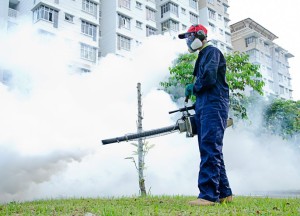Close to home
 What would our life be like in Utah if we suddenly were without our special service and local districts?
What would our life be like in Utah if we suddenly were without our special service and local districts?
It’s a scenario we hope to never experience, especially here at the Utah Association of Special Districts, where we have a front-row seat on all the districts do for their constituents. From the glass of water that comes from the tap to navigating the final resting place for Uncle Ned, they’re always on the job providing much of what we take for granted day to day.
The districts provide essential services via governmental entities which are closest to those whom they serve, which explains why, for so long, they were known as the invisible government, existing in the shadows despite their hands-on service of their community’s needs. Keeping their finger on the pulse of their communities is at the very core of their existence, being created by the very Utahns they serve.
• Local and special service districts begin with citizen petitions, once a need is identified. The local petition must be signed by at least 33 percent of the people holding 25 percent of the private real property in the proposed area or of registered voters within the district who voted in the most recent gubernatorial election. This is the first step toward creating a local district. If the petition drew two-thirds of the above population, it becomes a district; if not, an election is held. A special service district requires the support of property owners who own at least 10 percent of the taxable value of the proposed district’s private real property or by 10 percent of the region’s regular voters. Both districts must post a public notice before final resolution is adopted by the respective cities and counties. It then goes before the Lieutenant Governor’s office for certification of incorporation.
• While state and federal government serves Utahns at several levels, local and special service districts needs are unique to their region. For example, the water and wastewater needs in southern Utah significantly vary from those surrounding Salt Lake City. And there are times, such as when algal blooms infested Utah Lake, that the government entities work together for the common good. Another instance is on the legislative front, where independently and through the Utah Association of Special Districts, local and special service districts help legislators make informed decisions on proposals affecting the districts’ operations.
• As local and special service districts emerge from the shadows, there is an increase in transparency, where the public knows who is in charge and what the district does. In fact, the theme of our 2017 UASD convention was building trust through positive engagement with the communities we serve. You may notice that you’re not swatting away as many mosquitoes anymore without linking it to Mosquito Abatement and Control.
• Other districts are better known for their outreach, such as the Central Utah Water Conservancy District, which hosts the annual Pumpkin Walk at Central Valley Gardens along with its educational programs, and the North Summit Recreation Special Service District that as a matter of course engages youngsters in its sport camps.
• How can you learn more about your local and special service districts? Begin by checking our directory, which lists what’s active in Utah. From there, explore what services are available to you and how you can help serve your community,. Maybe it’s by practicing better water conservation, remembering to change your smoke detector batteries when you change your clocks, or coaching a youth team for parks and recreation. Click here to learn even more about the districts created to preserve your quality of life.
And the next time you grab a ride on the public transit, put the garbage to the curb or turn on the tap for a glass of the best-tasting water in the region, think of the local and special service districts that make it possible. We’re there for you!






